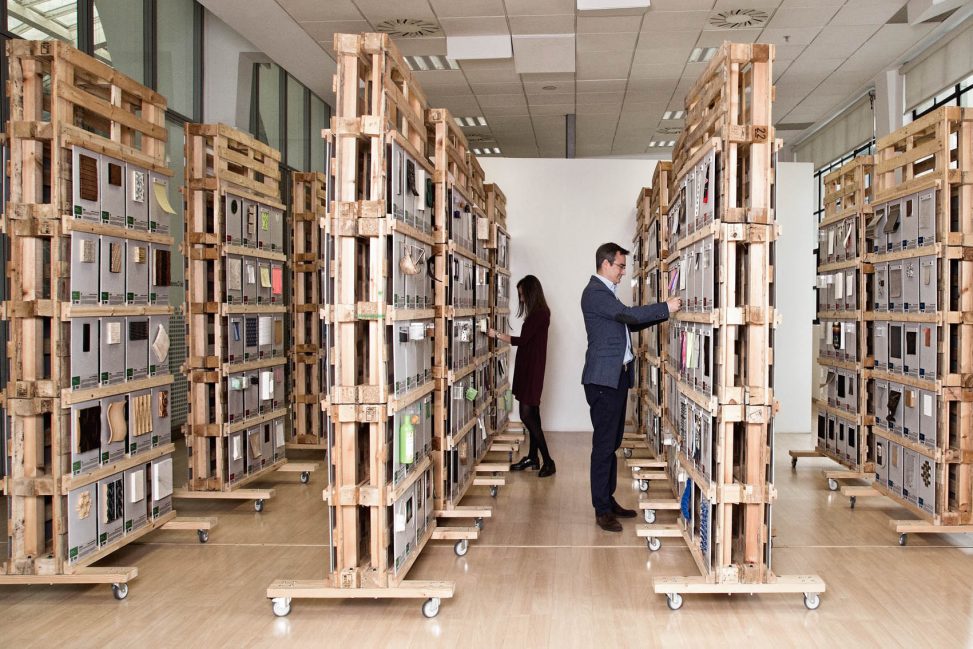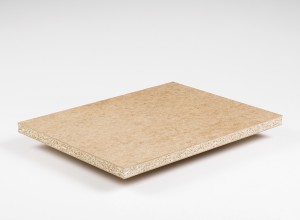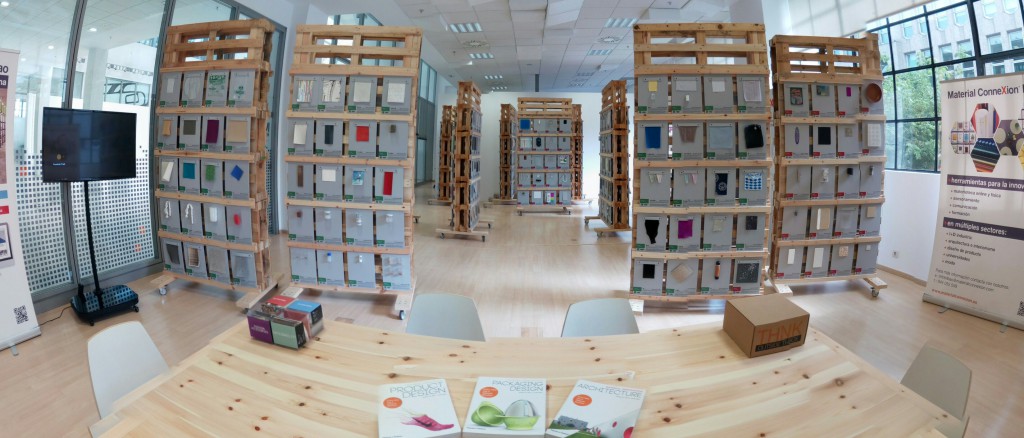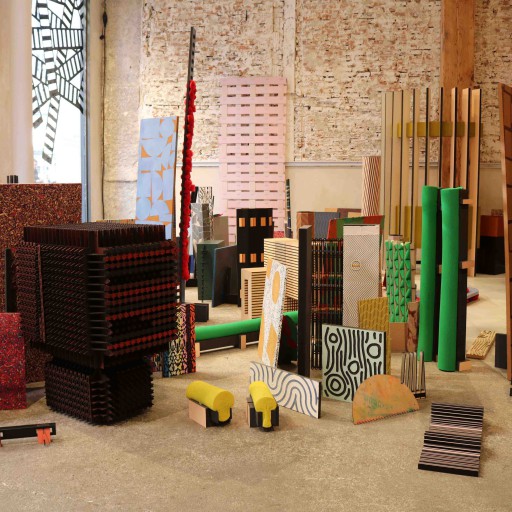If libraries are paradise for readers, materials libraries are paradise for designers. Or perhaps hell. Choosing between more than 6,500 references from the database at Material ConneXion, the biggest centre for materials in the world, can become a real headache.
What is a materials library used for?
For the director of Material ConneXion Bilbao, Unai Etxebarria, “the reason materials libraries exist is to put all the changes and new materials in the materials world in order and to make them accessible”. Their mission is to raise awareness of new innovative and sustainable materials, presenting them to the market and to professional users of the library. According to Etxebarria, “innovation isn’t technology, it’s thinking in a different way”. Materials libraries do not sell materials – they leave that to the manufacturers. They offer new material concepts and consulting, which helps a professional or a company find the best material for their project. In order to do so they must take into account what is required of the material and the characteristics that the client sets out, be it an architect, a product designer or an industrial designer. However, they also take into account the emotional or sensory value of each material.

“We try to ensure that our members are up to date with what is happening in the materials world”, he explains. Among the latest additions to their materials bank we found, for example, a new board concept, the superPan by Finsa, which signifies innovation in a field that has been static since the 1970s. It combines a chipboard nucleus which makes it light, and medium-density fibreboard which provides a better finish and mechanical properties. It’s a novel material with added value. We can also find materials with great sustainability, such as a biodegradable blanket which is used to absorb oils and petroleum derivatives, or a material used in packaging which protects against impact, like a substitute for expanded polystyrene made using a base of natural fibres from agricultural waste which uses a fungus as a binding agent. It has also been discovered that it has thermal insulating properties and it is starting to be used in sustainable construction “That is another function of a materials library – to identify new uses for existing materials. Sometimes a material is developed focused on one specific application but then we see that it has other uses”, explains the director.

The origin of materials libraries
The seed for Material ConneXion is also the origin of all the materials libraries that followed. George Beylerian, a product designer, was certain that choosing the right material was the key to success, or failure, of any design. So in 1997 he decided to create the first materials library in New York. “Originally, it was created as a materials archive, a classification of samples, and a huge database with a huge quantity of information stored and classified” but, according to Etxebarria, “the concept has evolved towards consultancy, because designers, architects and others present complex challenges that require an interlocutor”.
From New York it has spread all over the world, and currently has seven offices across the USA, Europe, and Asia, and an international team comprised of experts from different disciplines. “The reason for creating a network is that the world of materials is very widespread and constantly changing, and it’s happening simultaneously in different countries. Between us we can better visualise what is happening”, says Etxebarria.
There are also other national materials libraries such as the Dutch library Materia, the English libraries Material Driven and Material Lab, the French MateriÒ, and the materials gallery at the COAM (The Official College of Architects of Madrid) in Madrid.
How does a materials library work?
Unai Etxebarria explains the process of incorporating a new material in the Material ConneXion database. At the New York office there is a team of people that focus on looking for and identifying materials around the world. Finds from other offices, who look for manufacturers and technology hubs, among other things, are added to those from the New York team. When an interesting material is identified, they first obtain authorisation from the manufacturer, and then the material is presented to a panel of judges who meet monthly in the USA to evaluate if the material should be included or not. In order to guarantee the objectivity of the panel, it is made up of professionals from Material ConneXion as well as external collaborators. These change each month and they are always professionals that understand materials, such as designers or architects.
The three fundamental factors that determine their decision are:
- if the material is truly innovative, in that it brings something new to what already exists
- that it advances sustainability
- that it is commercially available, meaning that it can be used in any project
When its inclusion in the library has been approved, physical samples are sent to all the offices and the “Material Points”, which are displays at universities and design centres which raise awareness of the material at a global level.

From the physical to the digital
Though the origin of materials libraries are materials archives, today all of them incorporate an online database. This digital platform allows for the storage of a large quantity of information that would otherwise be impossible to provide to the user. It includes fact sheets which describe the specifications of the material, possible uses, characteristics etc.
These tools complement each other perfectly. A user can make first contact digitally on the database and search using the different filters available. But seeing things on a screen is not the same as seeing them in person, feeling them, smelling them. For Unai it’s the perfect combination, because “when a designer is working they like to know what that material is going to convey, what it’s going to look like”, and for that they must visit the physical display. There, all samples are the same size and are organised, allowing the user to easily find what they are looking for. If you come face-to-face with 1300 samples, like at Material ConneXion Bilbao, you might get lost…literally!





